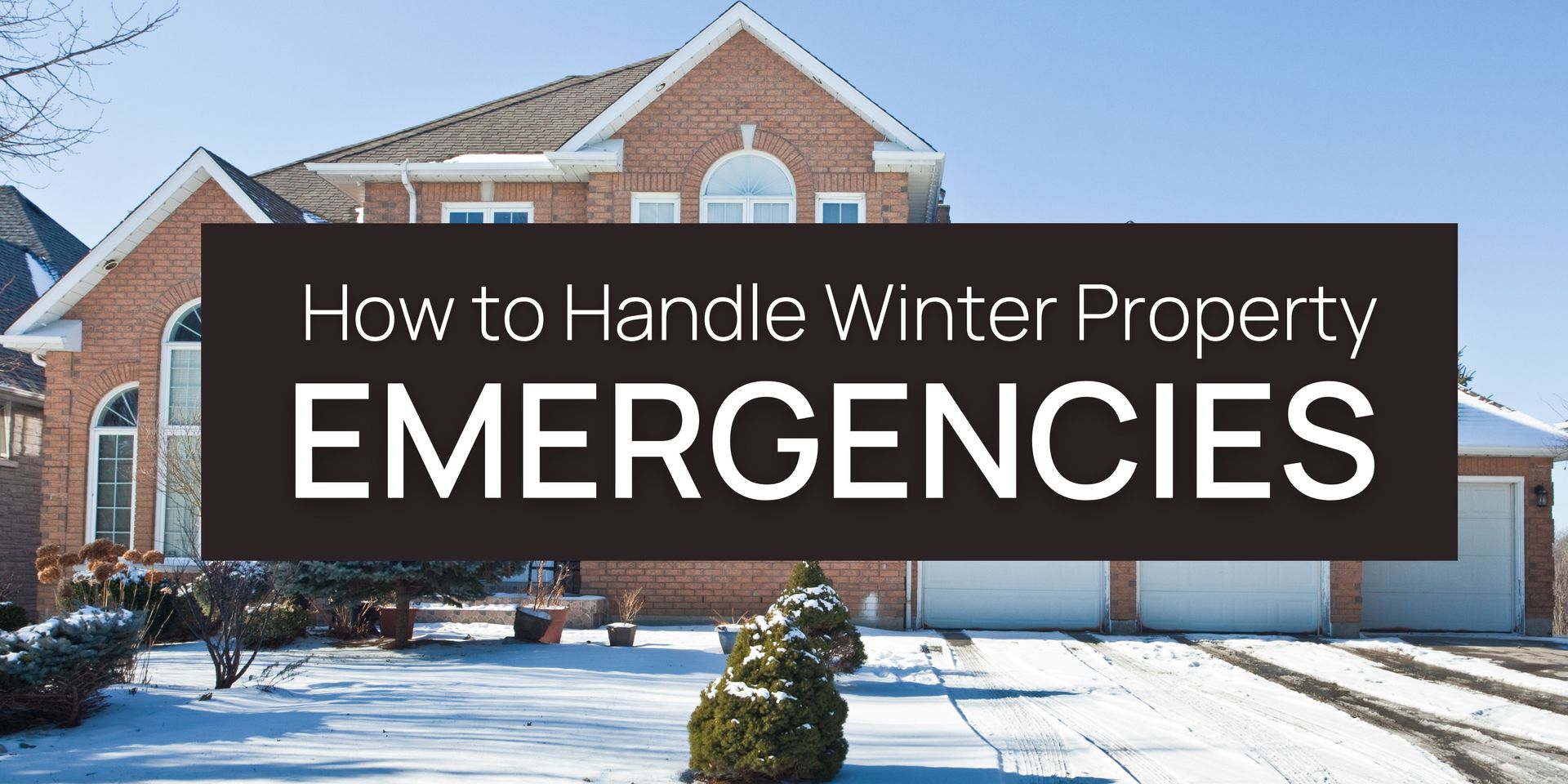Handling Winter Property Issues: A Guide to Emergency Maintenance
Winter Property Emergencies: Be Prepared with Expert Emergency Maintenance Solutions

As winter's icy grip tightens, property owners and managers face the challenges of keeping their properties safe, comfortable, and damage-free during the coldest months of the year. Winter property issues can range from frozen pipes to heating system failures, and knowing how to address these problems promptly is crucial. In this blog post, we'll guide you through the essential steps for handling emergency maintenance during the winter season, ensuring your property remains in top condition and your tenants stay warm and safe.
1. Establish an Emergency Response Plan:
Before winter sets in, create a comprehensive emergency response plan for your property. This plan should include:
A list of emergency contacts, including plumbers, electricians, HVAC technicians, and snow removal services.
Clear procedures for reporting and responding to emergencies.
A checklist of essential maintenance tasks and supplies to have on hand.
2. Frozen Pipe Emergencies:
Frozen pipes are a common issue during winter. Here's how to handle them:
Turn off the water supply: Shut off the water supply to prevent further damage.
Thaw the pipes: Use a hairdryer, heat lamp, or a portable heater to slowly thaw the frozen section.
Insulate exposed pipes: Insulate pipes in unheated areas to prevent future freezing.
3. Heating System Failures:
A malfunctioning heating system can be a severe winter emergency. Follow these steps:
Check the thermostat: Ensure it is set to the correct temperature.
Reset the system: Try resetting the system or furnace before calling a technician.
Call a professional: If the issue persists, contact an HVAC technician to diagnose and repair the problem.
4. Roof and Gutter Issues:
Heavy snow and ice can cause roof and gutter problems. Address them as follows:
Clear snow from the roof: Safely remove excess snow to prevent ice dams and roof damage.
Clear gutters and downspouts: Remove debris to prevent ice buildup and potential water damage.
5. Power Outages:
Winter storms can lead to power outages. Here's what to do:
Check the circuit breaker: Ensure the power outage isn't due to a tripped circuit breaker. Reset it if necessary.
Report the outage: Contact your local power company to report the outage and receive updates on restoration times.
6. Snow and Ice Removal:
Snow and ice accumulation can pose safety hazards. Handle snow and ice removal as follows:
Clear walkways and driveways: Keep these areas free of snow and ice to ensure safe access for tenants and visitors.
Consider professional services: For larger properties, consider hiring professional snow removal services for efficient and safe clearing.
7. Communication with Tenants:
Effective communication is essential during winter emergencies:
Keep tenants informed: Inform your tenants about emergency procedures and provide them with emergency contact information.
Respond promptly: Address tenant concerns and maintenance requests as quickly as possible.
8. Preventative Maintenance:
Prevent winter emergencies with proactive maintenance:
Regularly service heating systems: Schedule regular maintenance to identify and address potential issues before they become emergencies.
Insulate pipes and roof: Proper insulation helps prevent freezing and damage.
Winter property issues can be challenging, but with a well-prepared emergency maintenance plan and swift action, you can keep your property in top condition and ensure the safety and comfort of your tenants. By following these steps and maintaining open communication, you can navigate the winter season with confidence and minimize the impact of cold weather emergencies on your property.







